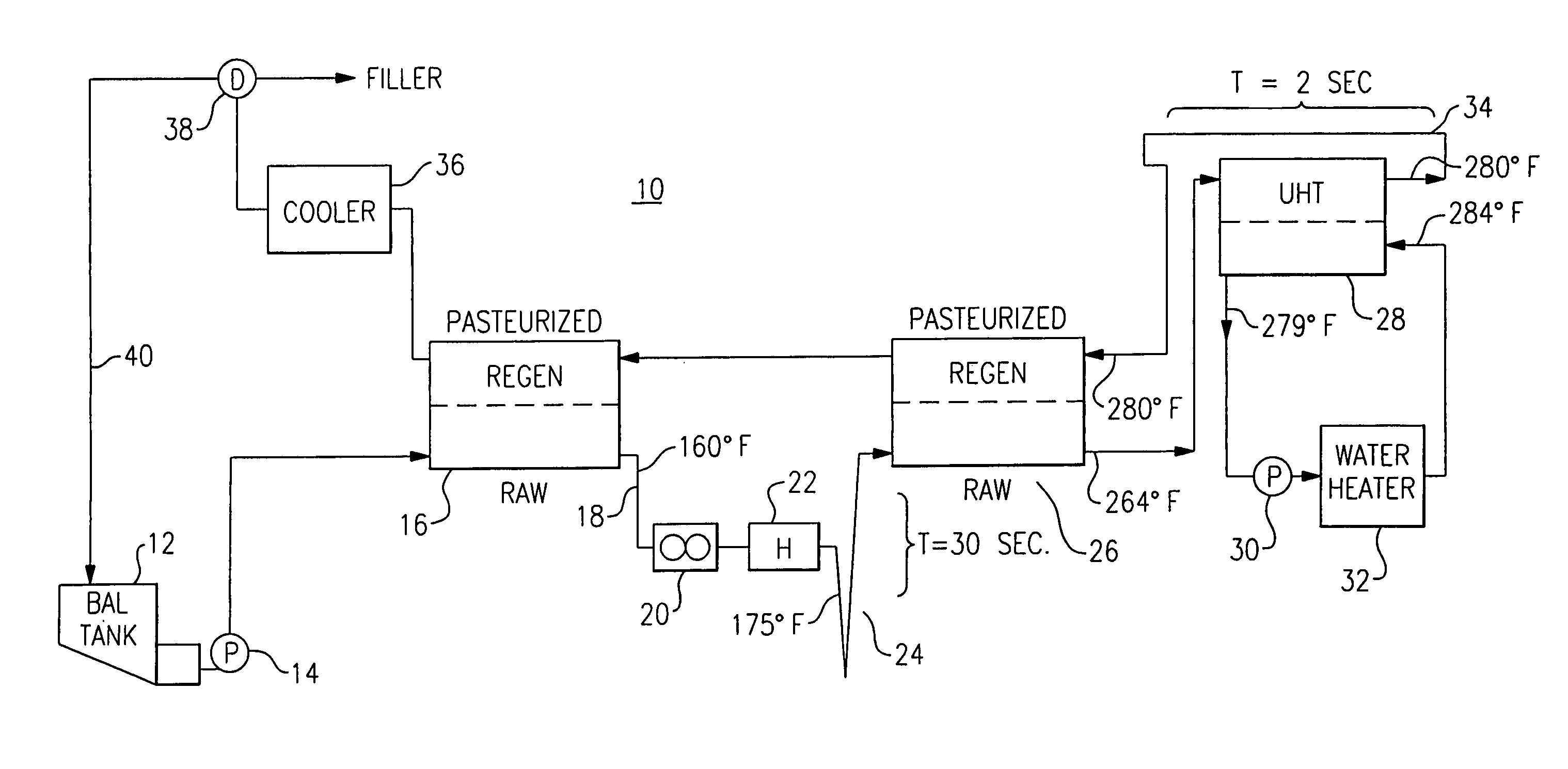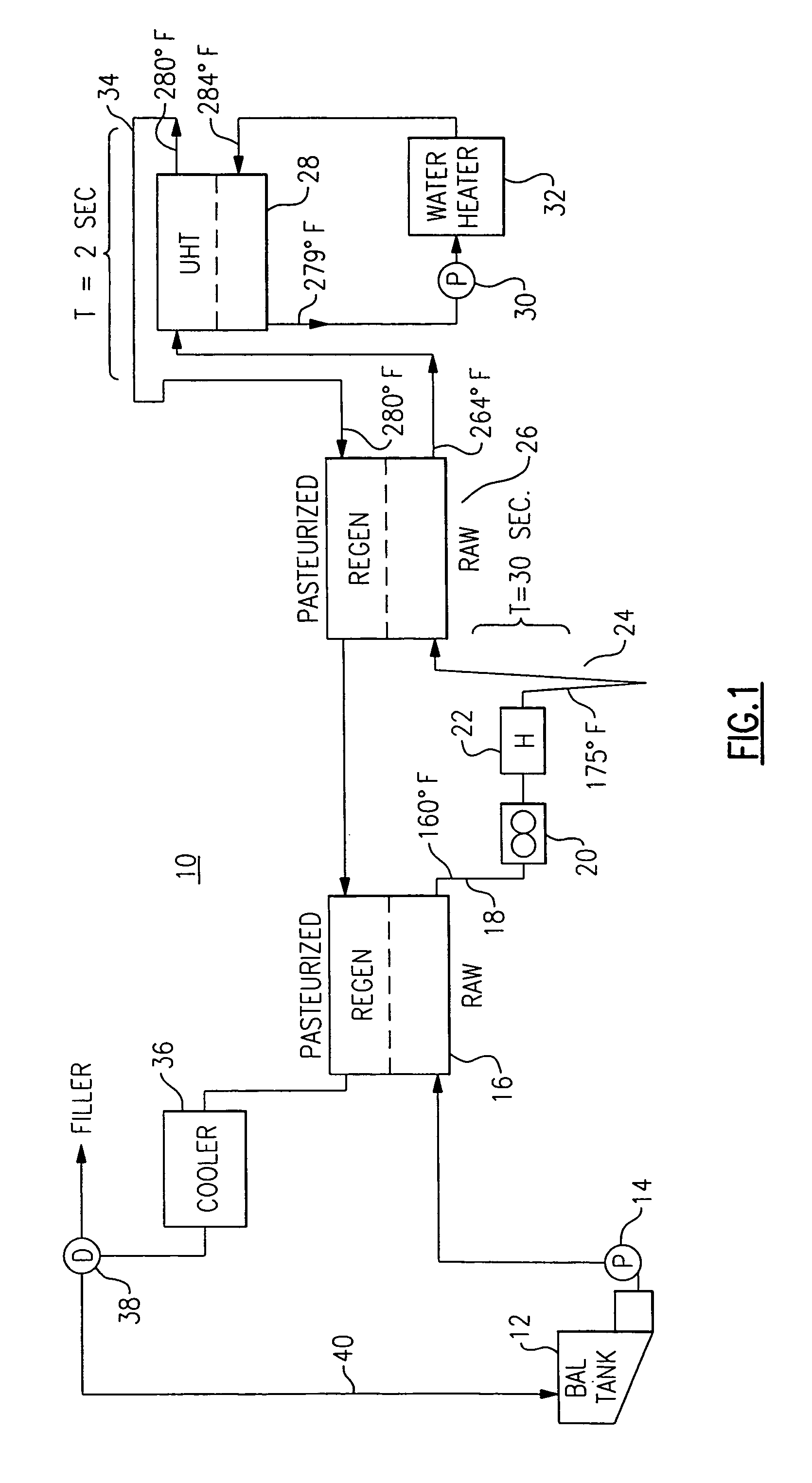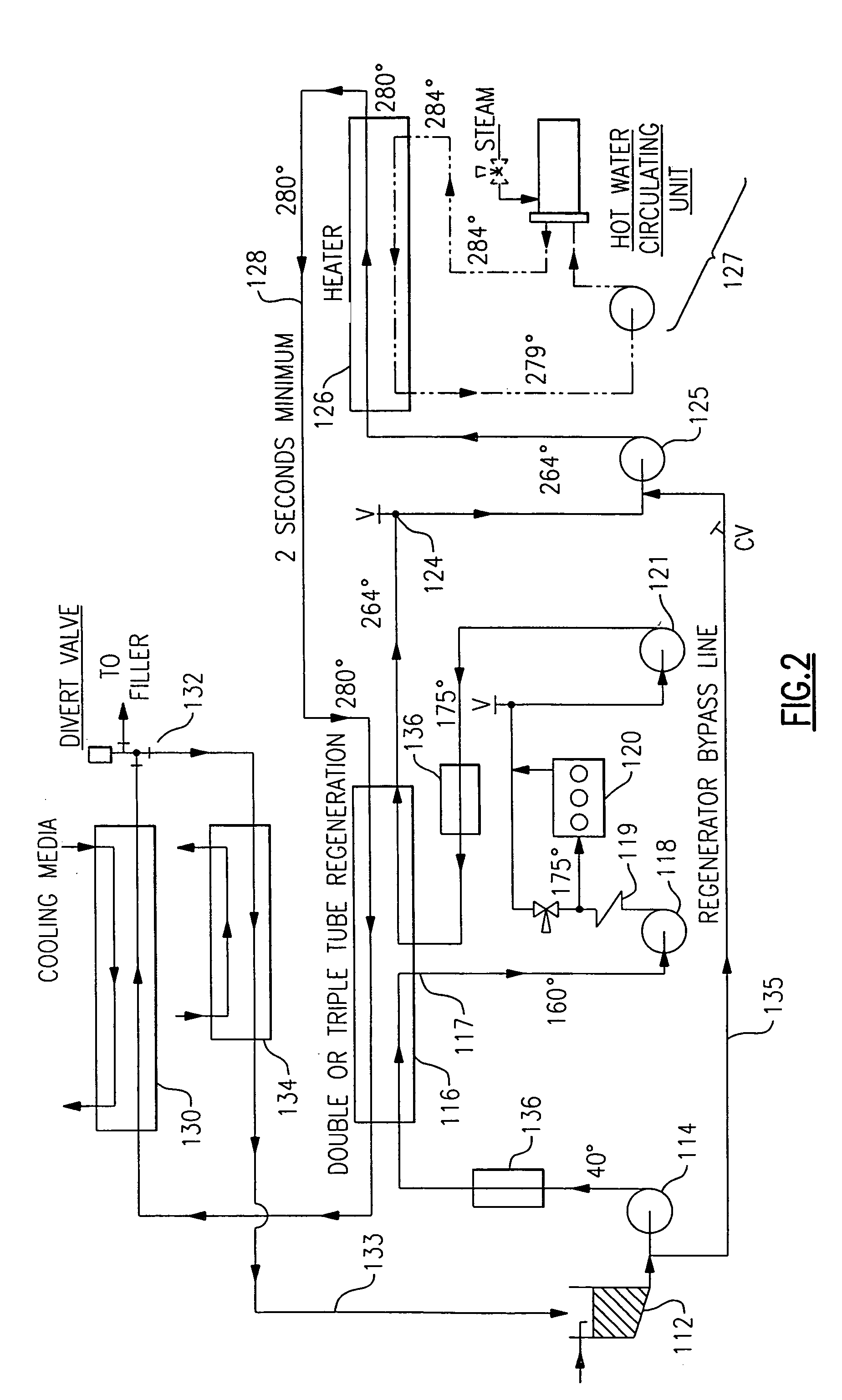UHT pasteurizer with regeneration
a technology of pasteurizer and regeneration, which is applied in the field of pasteurization of dairy products, can solve problems such as “cooked” or scalded flavor of products
- Summary
- Abstract
- Description
- Claims
- Application Information
AI Technical Summary
Benefits of technology
Problems solved by technology
Method used
Image
Examples
Embodiment Construction
[0027]To pasteurize milk legally, the milk must be heated to a minimum 163° F. (72.8° C.) and held at that temperature for at least 15 seconds. Milk product with a fat content of 10% or more must be heated to at least 168° F. and held for at least 20 seconds. There are alternative time-temperature relations, where the product can be heated to a higher temperature for a shorter period. One example of this is ultra high temperature pasteurization, or UHT, defined as heating the milk product to 280° F. and holding at that temperature for a minimum of two (2) seconds. At the present time, the majority of the milk in the U.S. that is pasteurized and bottled is heated between 163° F. and 175° F. and then cooled below 40° F. The equipment used to attain such pasteurization uses either a tubular heat exchanger or a plate type heat exchanger or press. These heat exchangers generally consist of three sections: a heater, a regenerator, and a cooler. The heating medium is usually water a few de...
PUM
 Login to View More
Login to View More Abstract
Description
Claims
Application Information
 Login to View More
Login to View More - R&D
- Intellectual Property
- Life Sciences
- Materials
- Tech Scout
- Unparalleled Data Quality
- Higher Quality Content
- 60% Fewer Hallucinations
Browse by: Latest US Patents, China's latest patents, Technical Efficacy Thesaurus, Application Domain, Technology Topic, Popular Technical Reports.
© 2025 PatSnap. All rights reserved.Legal|Privacy policy|Modern Slavery Act Transparency Statement|Sitemap|About US| Contact US: help@patsnap.com



